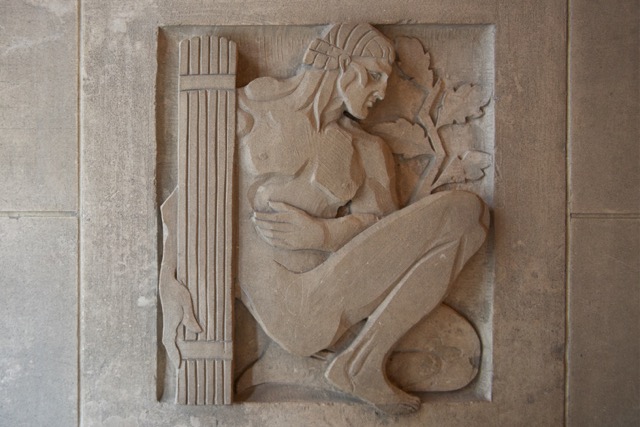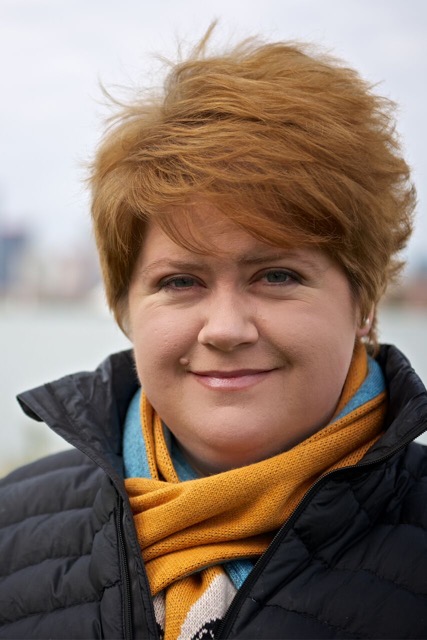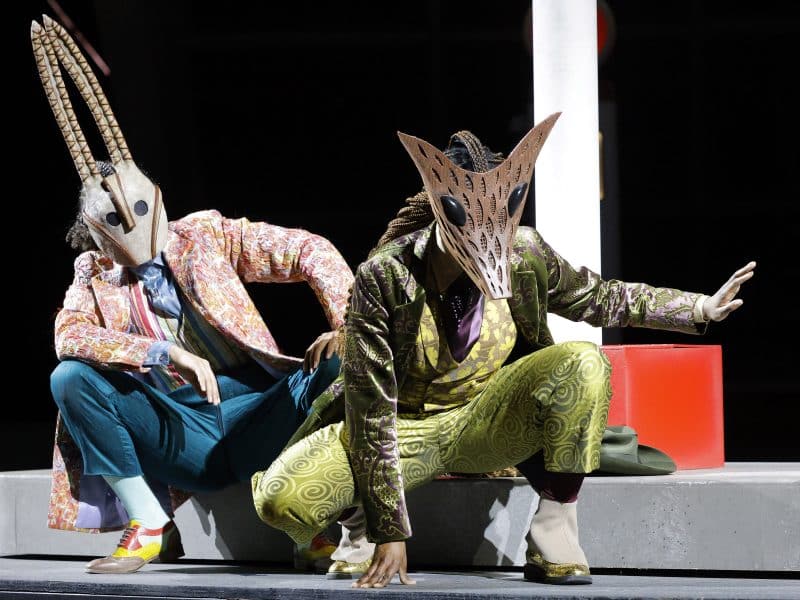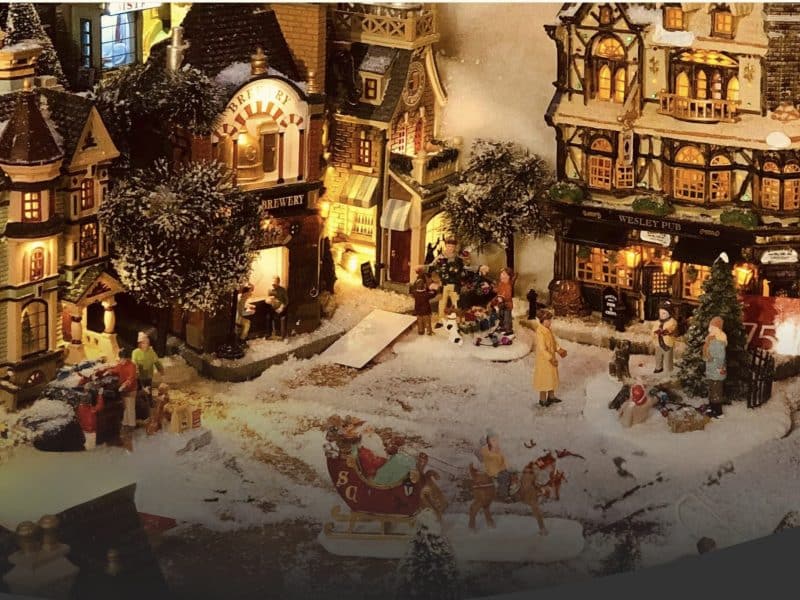Q&A: Parducci Society president on the sculptor’s legacy and her organization’s annual tribute
Model D spoke with Jennifer Baross about Parducci's significance to Detroit, characteristics of his work, and what guests can expect at the society's annual Parducci Tribute at the Masonic Temple.

This year would mark the 117th birthday of Corrado Parducci, an architectural sculpture whose work appears in practically every major building constructed in Detroit in the 1920s. Despite being so prolific and recognized by the artistic community as a sculptor of immense talent, his name does not resonate in the same way as Albert Kahn, George Mason, or any of the other famous architects he worked for.
The Parducci Society was formed in 2012 to bring greater awareness to his work and support modern day craftsmanship. On March 30, they will host their fourth annual Parducci Tribute at the Masonic Temple where Parducci got his start in Detroit. This year’s will be the society’s biggest event yet.
Model D spoke with Jennifer Baross, president of the Parducci Society, about Parducci’s significance to Detroit, characteristics of his work, and what guests can expect at the tribute.

Who was Corrado Parducci and why is he important to Detroit?
Parducci was born in Italy in 1900. He came from small village outside Pisa and emigrated here with his father when he was four years old. His father, who was a grocer, quickly found out that he couldn’t raise a four year old and secure enough work to his bring family over—Parducci was the middle child of thirteen children. So he put him in an orphanage. Parducci had a number of highs and lows throughout his life and career.
Eventually he gets reunited with his family. A schoolteacher notices his artistic talent and gets put into art education program. Both him and his brother Rudolph become sculptors. He started working for an architectural firm in New York City in his early 20s, and quickly began rivaling his employers. Around this time, Albert Kahn went to New York quite a bit for lighting and fabrics and other necessary building details. Kahn worked with Parducci’s employers, Zari & Ricci, quite a bit. He started working personally with Parducci, and asked him to come to Detroit to inspect two bank buildings in the financial district.
Kahn and other architects, like George Mason who designed the Masonic Temple, kept giving him work. He eventually moved the family to Detroit and worked on every major building that went up in the 1920s in Detroit and Michigan. He has pieces in Chicago, Ohio, Indiana, Los Angeles, New York, all the way to Florida. Over the course of his career, he did about 600 commissions. Which is incredible, because the Guardian counts as one commission even though he created many pieces for it. There were churches, schools, bank buildings, utility buildings. But also the Masonic Temple and the Fisher Building.
There was no job too big and no detail too small for him.
Do you have a favorite piece?
One of my personal favorites is the Shrine of the Little Flower in Royal Oak. Parducci did these beautiful, almost three-dimensional, bronze stations there. The figures actually stand away from the wall; it’s so beautiful. I also produced a documentary about Parducci’s work, and when I interviewed his son, he said the stations were his favorites, too.

How would you define Parducci’s style?
Parducci didn’t really have a signature style, which presents a dilemma in classifying him. Scale and proportion were incredibly important to Parducci.
As part of working for a firm and the training he received, he’d work on huge buildings, thousands of feet of linear structure, and it simply wasn’t possible for one person to do all that work. He might work on a morning shift and someone else would do the afternoon shift, so he would start the design and the other person would finish it. It made him an expert at emulating any style, be it Art Deco or Romanesque. But he never recreated the same piece exactly—he would always change details.
Would you see repeating forms and designs?
For his commissions, he would have function and style inform the designs. In schools or libraries, you might see a lamp of knowledge—an old oil lamp with a flame. But you’d never see the same lamp. The downtown library, for example, has a beautiful Art Deco scrolling binder. Just above that is the lamp of knowledge and a book behind it. But go to another library, and it’s completely different.
What was he like personally?
From research and talking with his son, he seemed to be a very modest man. He preferred his work to complete the package of a building. His goal was to make the building better, not for his sculpture to stand out on its own—almost that his sculpture be subservient to the building.
What was his process?
He would start off with a small mock, a three to five inch sketch, sometimes on paper or in clay. Once the architect signed off on it or agreed the design was headed in the right direction, he’d make full-size model in clay. A copy of the panel would then go to the foundry to recreate it in bronze or aluminum, or he’d find stone carver. One thing to note with Parducci: he was more of a designer and an intermediary, realizing the architect’s vision and utilizing the stone carver to create the final piece. He never really carved anything in stone or wood, but rather carried out his designs in those materials.
You’ve got an upcoming event hosted by the Parducci Society. What can guests expect?
A wonderful evening at the Masonic Temple! The building was a pivotal commission for Parducci’s career—his first solo commission. When he came to Detroit, he was still working under his former employer. George Mason had completed the exterior of the temple and was working on the interior. Kahn recommended Parducci to Mason, but at first said no because Parducci was only 24 at the time. But Parducci created models demonstrating his vision for the space and won over Mason. That commission enabled him to buy out his employers.
So guests will be able to see Parducci’s interior work in plaster on the ceilings, and his work around light fixtures. There will be two, 45 minute tours of the temple. A string quartet will perform as well. It’s moreso about having fun and mingling and enjoying Parducci up close with a drink in hand. Tickets are $55, and that includes beer, wine, and hor d’oeuvres. The goal is to generate interest in Parducci’s work and craftsmanship, and celebrate modern day craftsmen carrying that torch. Any funds raised will go towards providing that type of programming and future events.
The fourth annual Parducci Tribute is Thursday, March 30th from 6 to 9 p.m. Register for the event here.
All photos by Jack P. Johnson.





